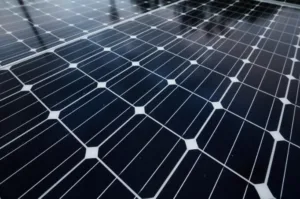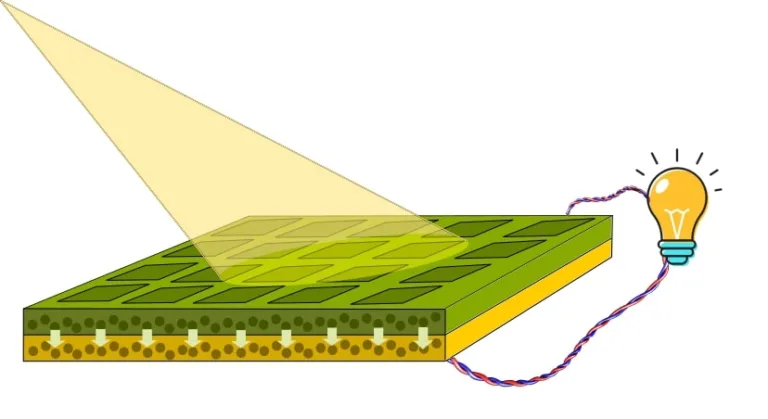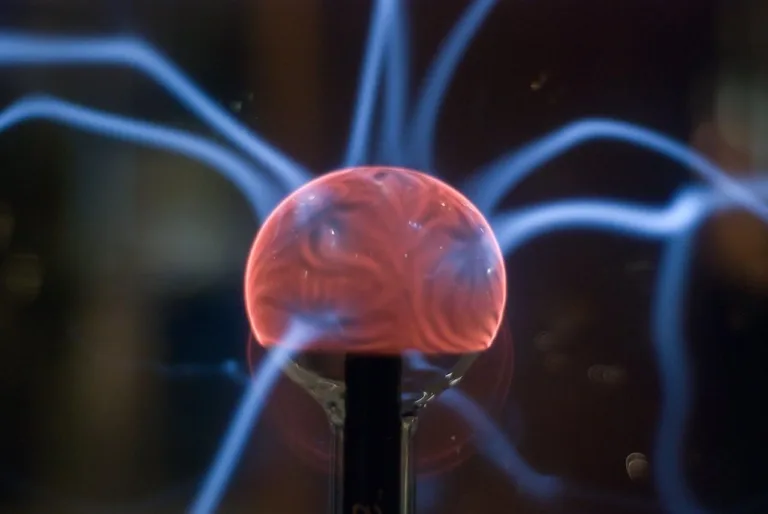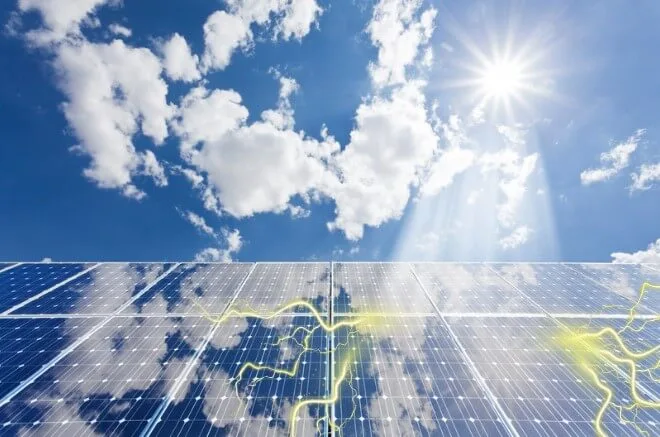How does a solar panel work? Magic? Science?… Both?!
Well here is the quick and easy explanation. The sun’s light is a source of energy… in fact, it’s a really really big source of energy. The sun delivers us 10,000 times more power than the entire human race uses every day! The best part… sunlight is completely free for everyone.
Solar panels take that sunlight and turn it into electricity using a little something we call the photovoltaic effect. The photovoltaic effect is caused by two pieces of silicon being sandwiched against one another.
Now you may be asking, “How does a sandwich make electricity?” Great question… wrong type of sandwich!
The key is that these two pieces of silicon are out of electrical balance with one another. In the world of physics, there is a rule that things out of balance want to be in balance. So these two, pieces of silicon are unhappy campers because one is negative and one is positive!
When sunlight meets up with these solar cells, it knocks a negative charge (electron) off one piece of silicon and that charge transfers it to the other piece of silicon.
Now that’s a useful sandwich!
1. The Energy in Sunlight
How much energy comes from the sun?
Lots and lots… and lots… and lots of energy comes from the sun. Too much to comprehend really. In fact, the sun’s light is the most abundant energy source on Earth.
Here’s a little example for you. A lightbulb in your house uses about 60W watts of energy. You’re TV uses about 150W. A space heater uses around 1,500W.
But the earth… the earth gets around 173,000,000,000,000,000W of energy from the sun! That’s a ton of energy. About 10,000 times more than all of humanity uses!

The sun’s abundant energy carries tons of little particles called photons. Imagine that light is kind of like dust. A bunch of tiny little objects you can’t see by themselves, but when you put them together they make a visible cloud. Those tiny little dust particles are like photons and the dust is like light.
This light and these photons are shot out of the sun towards Earth, and that’s what makes up that 173,000,000,000,000,000W of energy that we can harness using the photovoltaic effect.
2. How Does a Solar Panel Work?
Great! Now we know about sunlight. But, that doesn’t explain how a solar panel works. Well, to understand that we first have to understand what a solar panel is made of.
What is a solar panel made of?


If you zoom into a solar panel you will find that they are made of tinier little solar panels called solar cells. Now, let’s zoom in a little further and you will find that those solar cells are made from itsy-bitsy bits of an element known as silicon.
Why Silicon? Because is highly durable, and is efficient at converting sun to electricity. Oh… and because silicon is the second most abundant element on earth! Silicon… aka… sand!
Sand and carbon are heated together to 2000 degrees Celsius, which turns them into raw silicon. This silicon turns into a gas, which is then blended with hydrogen. This forms a solid that is cut into thin solid strips of silicon.
You actually interact with silicon a lot. Silicon makes up things like glass, cement, pottery, microchips, and many plastic bits and bobs around your house. These thin strips of silicon are stable, which is good when we use them for other objects. But bad when we use them for solar panels!
Stable means that their electrons don’t move around, and this is a problem for us because we need moving electrons to make electricity. So, one of these thin strips of silicon is blended with elements that have extra electrons (phosphorous), and one is blended with elements that need extra electrons (boron).
Here comes the best part…! We make a sandwich!
How do solar panels work diagram

The photovoltaic effect
By sandwiching or smooshing these two pieces of silicon together, we create an “electric field”. This electric field is an area where the electrons are pulled from the silicon strip that has extra electrons towards the strip that needs electrons.
However, the existing bonds that hold the silicon strip together are stronger than the pull of the magnetic field. Because of this, the electrons stay put. But here’s where the sun comes in!
When the sun shoots light towards us, the tiny little photons hit the solar panels and give those electrons the extra little nudge that they need to start moving. The electrons break off and because of the magnetic field, they start going in one direction.
But, the electrons moving out of the solar panels create a gap in the silicon that wants to be filled. So we stick a wire where the electrons are going and attach that wire where there is a gap.
The electrons move from where they are being knocked off, towards where they are being pulled, through the wire, then fill the gap… and boom bang Bob’s your uncle. That’s all electricity is… moving electrons!
3. Usable Electricity
You may be asking, “Great electrons are flowing through a wire, but how does that help me watch TV?” Easy! Cut the wire, then stick your TV in the middle of it…right?
Almost. There is one more step in the equation. Have you ever heard of AC/DC? Sweet band right?
Yep. But, it also stands for Alternating Current (AC) and Direct Current (DC). Direct current means that the power only flows in one direction and is consistent (hence the word direct). Alternating power sometimes switches directions and has a non-constant voltage.
Remember how our solar panels were constructed to pull electrons out in one direction? Well, this causes them to have a direct current, which is a problem for us because our houses primarily use alternating current.
Our houses alternating current because your appliances, phones, and lights need different amounts of power. And also, because it is more efficient at traveling through wires.
So, to switch your solar power from DC to AC the electricity runs through an inverter. And boom! There you have it. Clean electricity from the sun, through your solar panels, through the inverters, and into your toaster, so you can make a sandwich!

Additional Resources
Frequently asked questions on solar panels
Are all solar panels made of silicon?
No. But, 95% of solar panels are made of silicon.
You can also make solar panels out of other materials, and ongoing research is looking into this.
How do solar panels work at night?
Basically… they don’t. Solar panels can produce a bit of electricity from other light sources like streetlamps or the moon, but it’s a very very small amount of electricity.
As you now know from reading the article above, the photovoltaic effect is a primary part of how solar panels produce energy. You need the abundance of photons coming from the sun to really move those electrons enough to generate some real power.
How do solar panels work when it's rainy or cloudy?
Solar panels don’t work as well when it’s rainy or cloudy, because you aren’t getting that direct sunlight. But, they do produce a bit of power.
That’s not all bad news though because solar panels get dirty and without rain or snow, people have to clean them manually.
Related Articles:
Why do solar panels work better in cold weather?
Electrons move faster when they are exposed to more heat. This also means that they are slower and moving less when they are cold.
When they are hit by direct sunlight and are cold, it causes a greater difference in voltage. This in turn causes more electricity.
Wait! Then why don’t solar panels work better in the winters of Canada than they do in the USA? Good question!
That’s because the sun angles are usually lower and less direct, there is less hours of sun in a day, and they may be impacted by snow.
How do solar panels work on a house?
Solar panels work on a house by changing photons to electricity using the photovoltaic effect. This electricity is then changed from DC to AC current through inverters, because your appliances run on AC current.
If you don’t use all of the power produced, then the solar panels power is either put onto the electric grid, or stored in batteries for use later.
